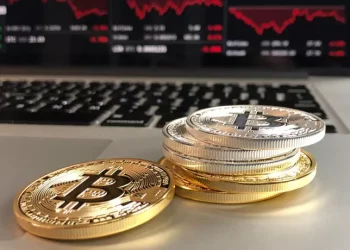In its latest briefing, financial analysis institution QCP pointed out that the current global risk sentiment is in a state of continuous fluctuation, and one of the key factors triggering this situation is the tariff policy adjustment proposal put forward by US President Trump. Recently, Trump suddenly proposed to significantly raise the tariff on EU goods from 20% to 50%. This news was like a bombard bomb, instantly causing intense tension in the global market. However, the policy was subsequently postponed until July 9th for implementation, which temporarily stabilized the market.
From the perspective of key indicators in the cryptocurrency market, the volatility gap of Bitcoin (BTC) from July to June has shrunk to below 1. This phenomenon indicates that market participants have considerable uncertainty about the future direction of tariff policies and expect that the policies may change again. At the macroeconomic level, the inflation situation is equally not optimistic. Although oil prices have dropped recently, the problem of port congestion has spread rapidly from Europe to Asia and the United States. This situation is highly likely to push up shipping costs, thereby triggering a new round of indirect inflation and exerting potential pressure on the global economic recovery.
In the cryptocurrency market, the price trend of Bitcoin attracts much attention. Last weekend, the price of Bitcoin once dropped to $106,000, but then rebounded rapidly to $110,000. Behind this price fluctuation lies the result of the interwoven effect of multiple factors. From the perspective of capital flow, BlackRock’s Bitcoin fund IBIT has performed outstandingly, showing a net inflow for 30 consecutive days. In sharp contrast, the TQQQ Nasdaq ETF has been experiencing continuous capital outflows. This phenomenon indicates that there is a significant divergence in investor sentiment between the current crypto asset market and the technology stock market.
Against the backdrop of an unstable policy environment, the cryptocurrency market has demonstrated a relatively mature aspect. Despite facing numerous external uncertainties, such as adjustments in tariff policies and inflationary pressure, the cryptocurrency market has not experienced a major crash or a prolonged slump. QCP believes that this reflects that after years of development, the cryptocurrency market has already acquired a certain level of risk resistance and self-regulation mechanisms. Investors’ understanding and acceptance of cryptocurrencies are constantly improving, and the structure of market participants is also becoming increasingly diversified. These factors jointly support the cryptocurrency market to remain relatively stable in a volatile environment. In the future, as the global economic situation and policy environment continue to evolve, how the cryptocurrency market will develop is worth continuous attention.
Related Topics:
- Hyperliquid platform now has a $1.1 billion long bet on Bitcoin with a 40x leverage, setting a new record for the year
- Microsoft has filed a lawsuit against the information-stealing malware Lumma
- White House Crypto Director to Speak at Bitcoin 2025 Conference

















